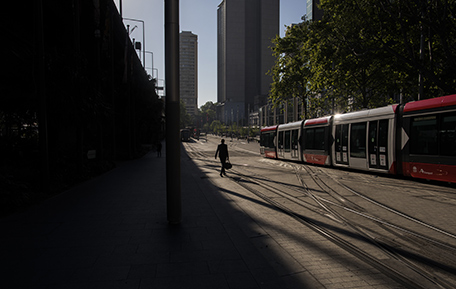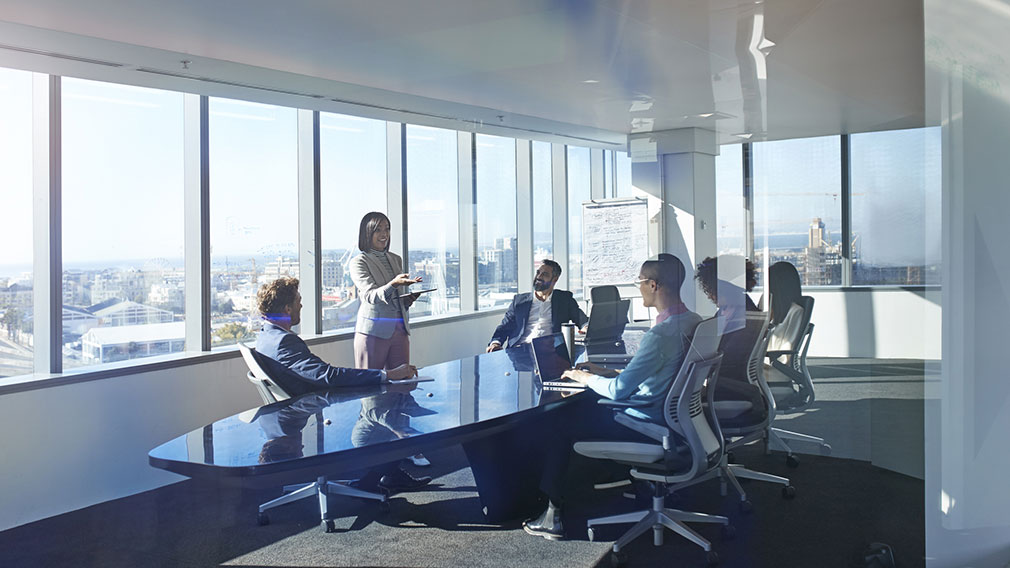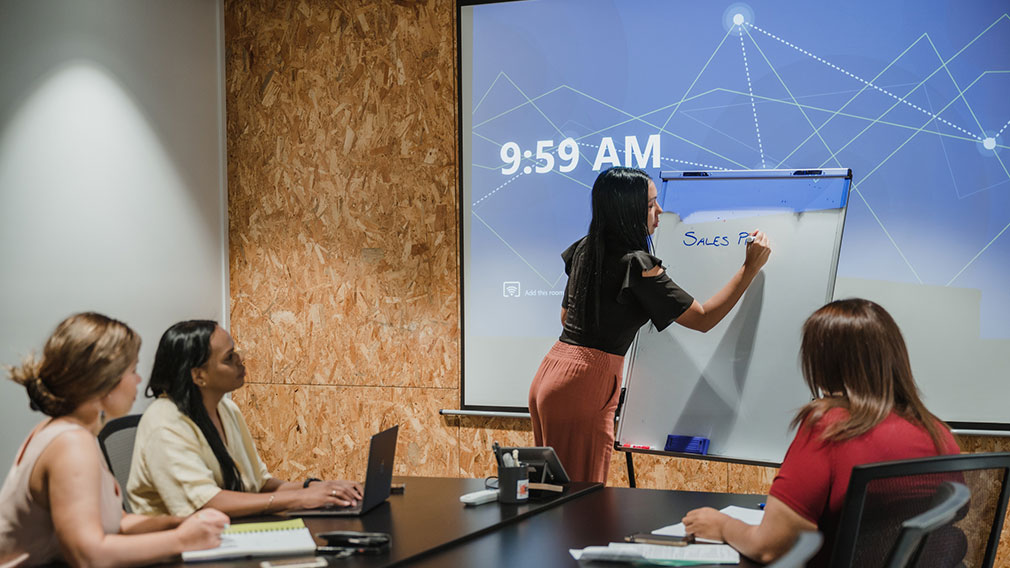Adjusting to life back in the office

More Australians are gradually returning to CBD offices as restrictions ease. (Getty)
After the turmoil of 2020, many people and organisations are rightfully asking: what has 2021 got in store for us?
Back to the office like its 2019? Work from home? A bit of both?
Given it looks like some level of sustained COVID disruption will remain the norm, many organisations are midway through exploring hybridised approaches that combine on-site work and working from home.
But we must remember we’re all navigating the challenges ahead from very different boats.
Some people have flourished and thrived in WFH settings and are desperate to retain this, while others have found the erosion of work-life boundaries, the cumulative stress of co-parenting, co-working and co-habitation a challenge. For many people, their physical WFH spaces have been a mix of lonely isolation and competing for the sunny side of the kitchen table with flatmates. For others, it has been a tireless game of hide and seek as they look for an elusive quiet space to make a call, contribute to a Teams meeting or spend five uninterrupted minutes thinking through something.
Regardless of which one of these experiences best describes your past 12 months, the length of COVID means habits have formed, behavioural patterns changed, and we are currently living in our new “normal”. Any movement from where we are now will bring with it all the trials and tribulations we encounter when navigating any transformational change in the workplace.
And if anything, many of us have less emotional, physical and social bandwidth available to manage the ups and downs at a time when the only thing to be certain of is uncertainty itself. Just because we’ve been facing a pandemic does not mean the ups and downs of life magically subside.
What comes next will be a challenge for many organisations and people.
So, what are some of the key things to keep in mind?
First, it is imperative to recognise that some sort of transition trepidation is normal.

Many organisations are exploring hybrid approaches combining working from home and returning to the office. (Getty)
Addressing this is not as simple trying to “out positive” perceived negatives, but acknowledging that a level of discomfort is a valid emotional response to transformational change. This may manifest in abject fear of infection risks from returning to public transport, or perhaps it is worrying about career stagnation and invisibility if a physical return is delayed.
Or it may even be reservations about whether there will be an expectation to maintain the extra work hours and tempo of WFH upon return to site. For others, it might be a sense of loss around the level of work-life integration they have enjoyed over the past 12 months.
When it comes to fear and other feelings, we can’t just tell someone to “get over it”, for them to just “think positive” or ask people to supress their emotional state.
Negative emotions are real, valid, and are also very informative. But they require a degree of psychological agility to manage. They tell us something isn’t quite right. Managing the varied reactions to what comes next requires a high degree of empathy.
And this can’t be just another “leader-led” activity.
Leadership positions don’t give us some automatic immunity from the stresses and strains of life, and the past year has come at a high emotional labour cost.
To get his right, individuals need to be empowered to take action. And where possible (acknowledging role requirements and operational limitations), craft their experience of work so they have a sense of agency over how, what, where, and when they do certain tasks, how they manage work demands, maximise relational elements of their roles, and where they take a degree of ownership over their next new ways of the working experience.
Taking time to understand what is going on for someone, ensuring they feel heard, are powerful tools. It helps people get beneath the surface and create a sense of agency over the things that concern them. They might explore previous coping strategies and supports used in the past. By listening, you also better understand what information and support to provide for reassurance and enabling an element of control around those return-to-site fear factors contributing to trepidation.
Most of all, it is about helping people succeed.
I love the notion that we need to “move to where people are at” so we can bring them on our journey, rather than just dictating what they need to do. The past year saw us virtually bring people into our homes and our lives in ways we have never previously experienced. Between technology issues, pet and child interruptions, VTP (visible track pants) and forgetting to turn our microphone on, we all expected and accepted some degree of imperfection as our level of humanness was on display for everyone.
I believe a continuation of that shared humanity and enabling a sense of voluntary vulnerability is important in navigating what comes next.
Managing expectations for ourselves and others, along with increasing people’s sense of agency over their move to what comes next, is also critical.
In times of adversity, the things most important to us often bubble to the surface, so it is likely that people will want to hold on to these in their next iteration of work. While we all have formal job descriptions, and our KPI’s and activities are mostly set by our organisations or people leaders, there is almost always some latitude to craft your work in ways to maximise your values alignment, play to your strengths, and, to some extent, preserve the positives from the last new normal.
At a team level, particularly for those working in hybridised ways, it is worth paying attention to what extent there is a genuine shared sense of identity about what it is you are collectively trying to achieve. Uncertainty equals discomfort, and sustainable productivity and engagement requires genuine role clarity.
Another point to remember is that in hybrid work environments, where everyone has a slightly different operating rhythm, it is very easy to accidentally encroach on someone’s work-life boundaries, for frustration and miscommunication to occur, and silos to emerge. Teams need a shared understanding how and why we are working in various ways, and ways to create visibility of our own unique experience of work.
As a final point, it’s worth reflecting that when work is good, it’s good for us, and the key things that make work good are the same irrespective of where and how we are working. Autonomy, role clarity, support, respect, recognition – none of these are the exclusive domains of on-site, at home, or somewhere in between.
The path ahead is unlikely to be straightforward and easy for all, particularly larger organisations with thousands of different individual team members. But if COVID has proved anything, it’s that we humans are pretty resilient and adaptable to change.
Remember, it took time to adjust to our last new normal. It is going to take time to adjust to what comes next.




